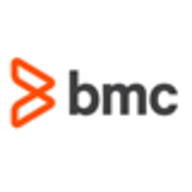

Find out in this report how the two Process Automation solutions compare in terms of features, pricing, service and support, easy of deployment, and ROI.
| Product | Market Share (%) |
|---|---|
| Control-M | 4.6% |
| Azure Automation | 1.1% |
| Other | 94.3% |

| Company Size | Count |
|---|---|
| Small Business | 24 |
| Midsize Enterprise | 12 |
| Large Enterprise | 113 |
Azure Automation is a powerful tool that allows users to streamline and automate various tasks and processes within the Azure environment.
It is commonly used for automating resource provisioning, managing virtual machines, scheduling and executing scripts, and orchestrating workflows. Additionally, Azure Automation is valuable for monitoring and alerting, as well as managing and deploying applications.
Users appreciate its ability to automate tasks, streamline workflows, and improve efficiency. The platform's scalability, integration with other Azure services, and wide range of pre-built automation modules make it a valuable tool for managing and tracking automated processes.
Control-M by BMC is engineered to manage hybrid cloud workflows, offering orchestration capabilities starting at $29,000 annually. Aimed at helping growing teams, it efficiently supports cross-environment scheduling and automation needs.
Control-M offers robust cross-platform scheduling, automation, and integration with applications such as SAP and Informatica. Users appreciate its ease of use with a graphical interface, centralized management, and monitoring capabilities. Advanced features, including Managed File Transfer, automated error handling, and real-time alerts, enhance productivity. The ability to unify workflows and support diverse environments makes Control-M a trusted tool in many sectors. While improvements in reporting flexibility and API integration with tools like ServiceNow are needed, addressing performance issues during upgrades could enhance its value. Offering improved support for new technologies and cloud environments is beneficial, with cost-effectiveness being a consideration.
What are the key features of Control-M?Control-M is leveraged in industries like finance for enterprise scheduling and data management, supporting mainframe, Linux, Unix, Windows, and cloud platforms. It contributes to workflow orchestration and workload automation, improving operational efficiency and enhancing IT infrastructure across those environments.
We monitor all Process Automation reviews to prevent fraudulent reviews and keep review quality high. We do not post reviews by company employees or direct competitors. We validate each review for authenticity via cross-reference with LinkedIn, and personal follow-up with the reviewer when necessary.